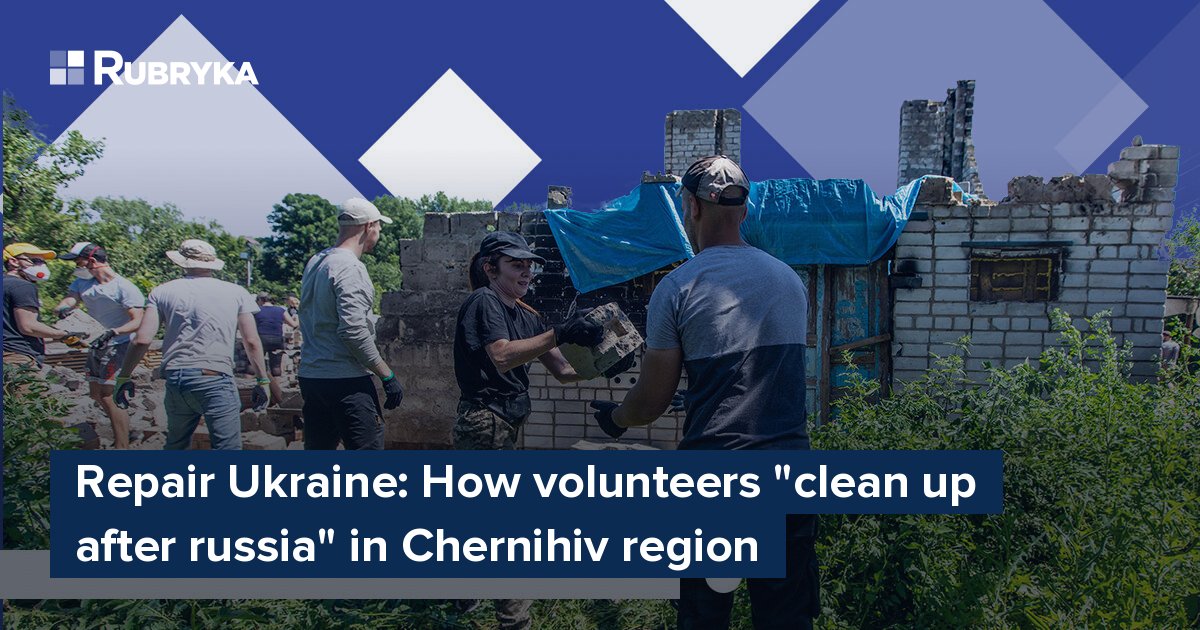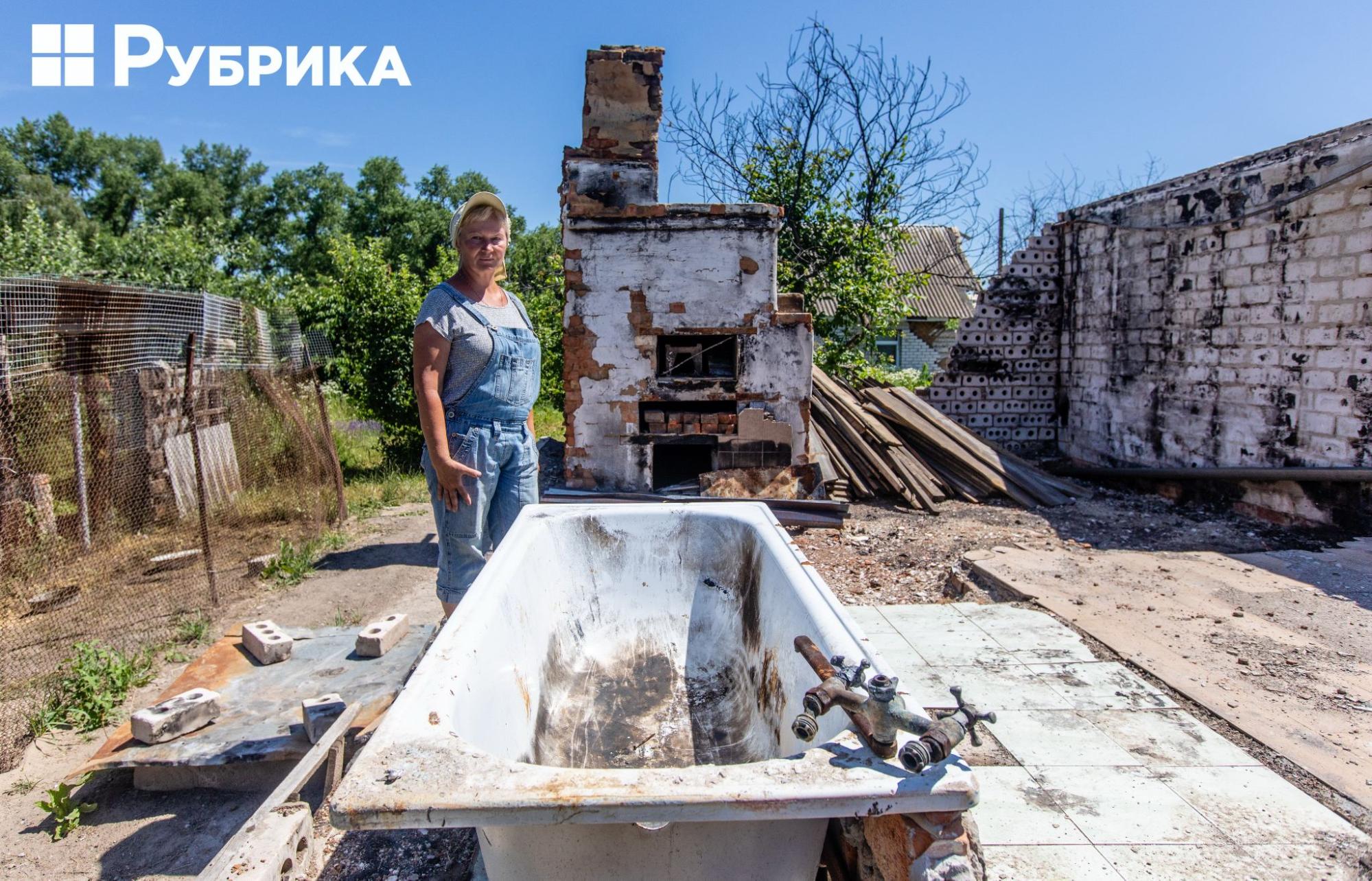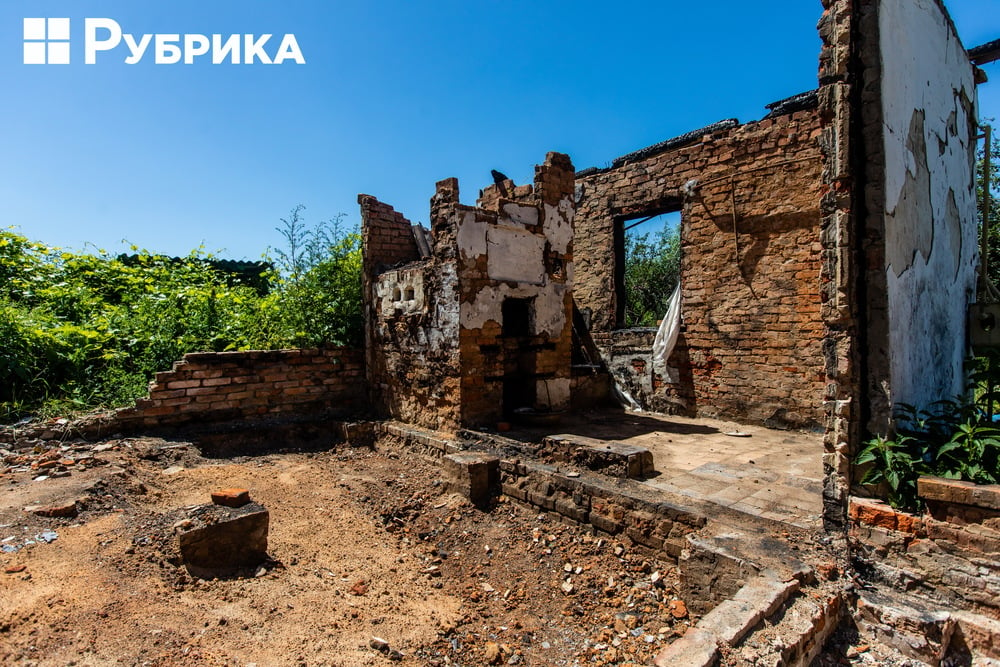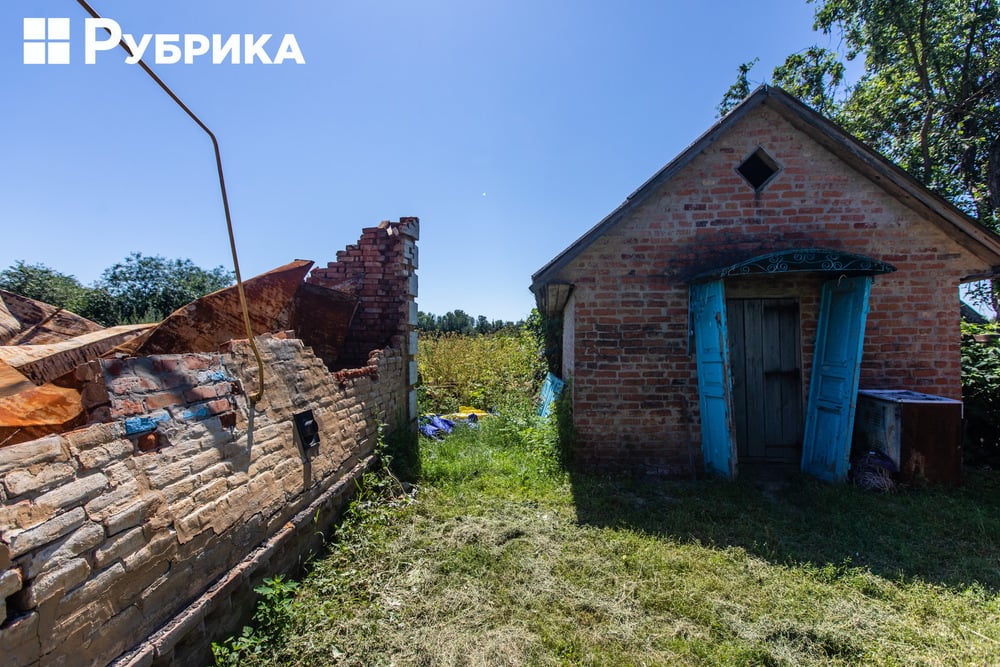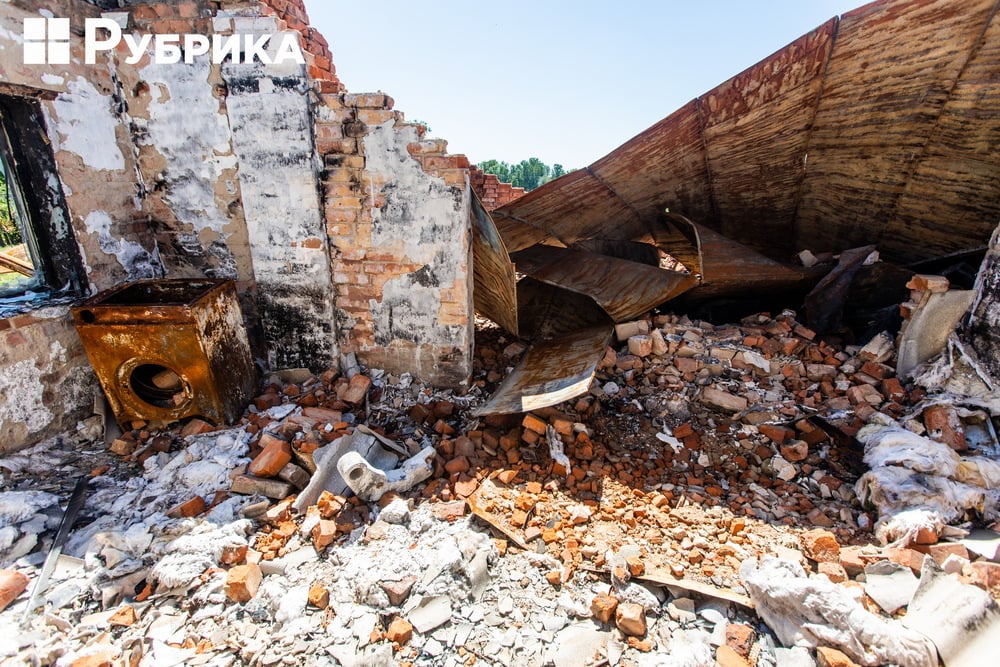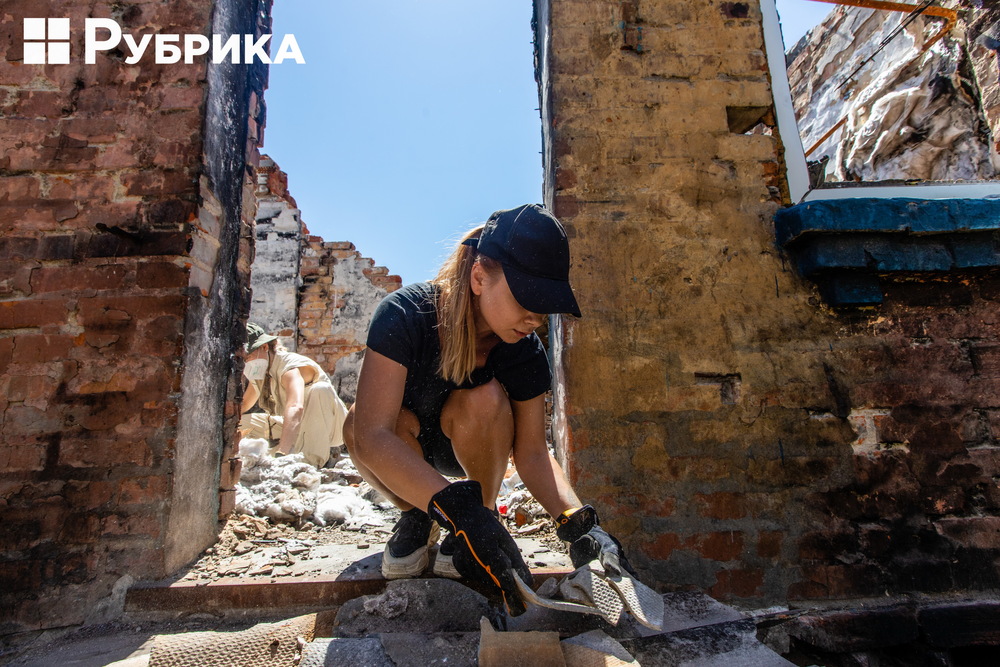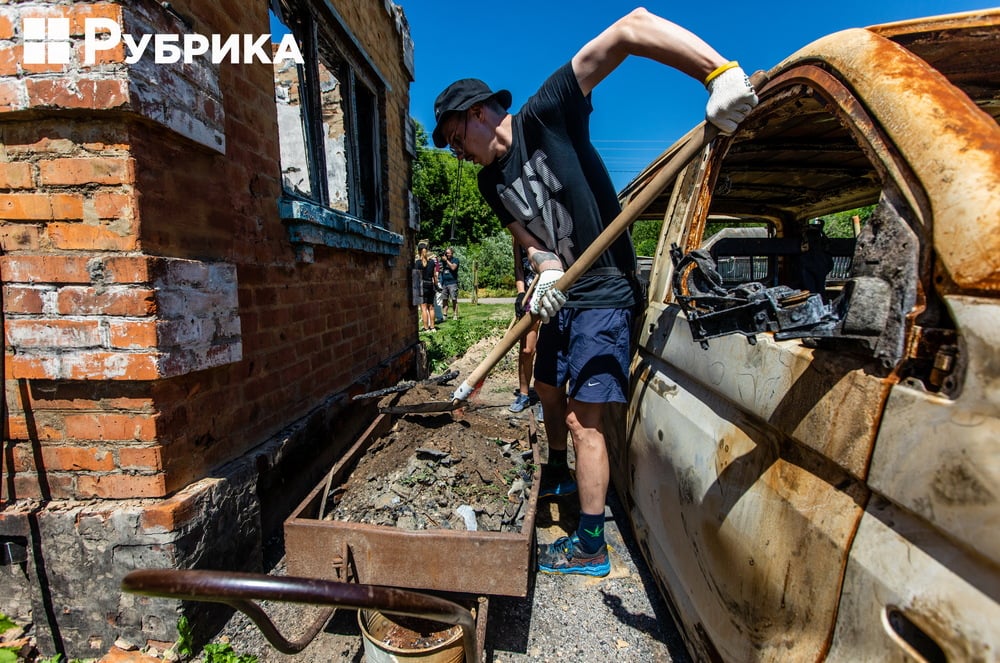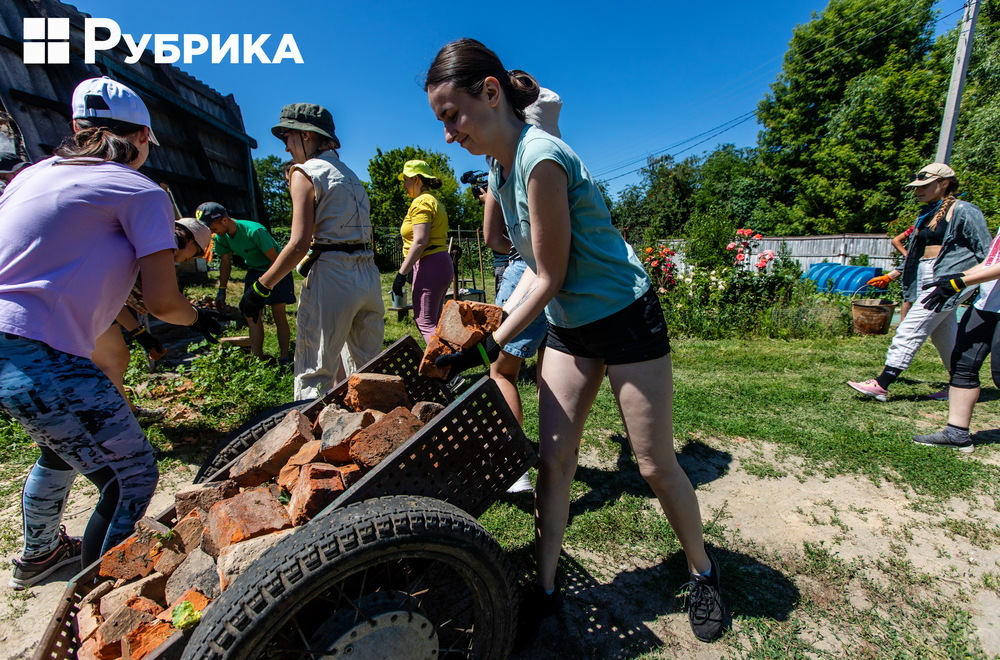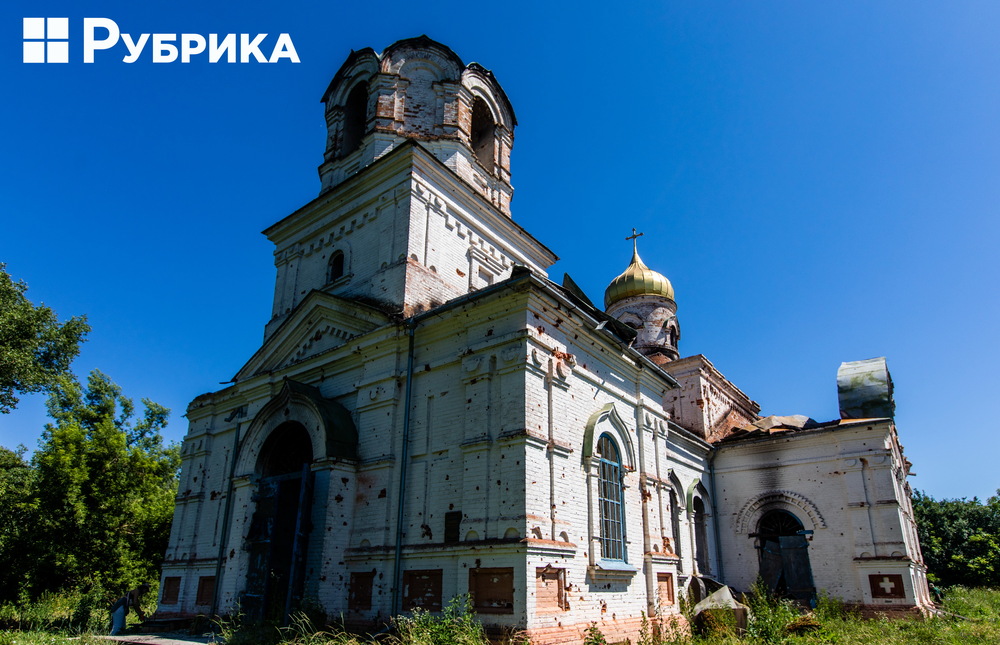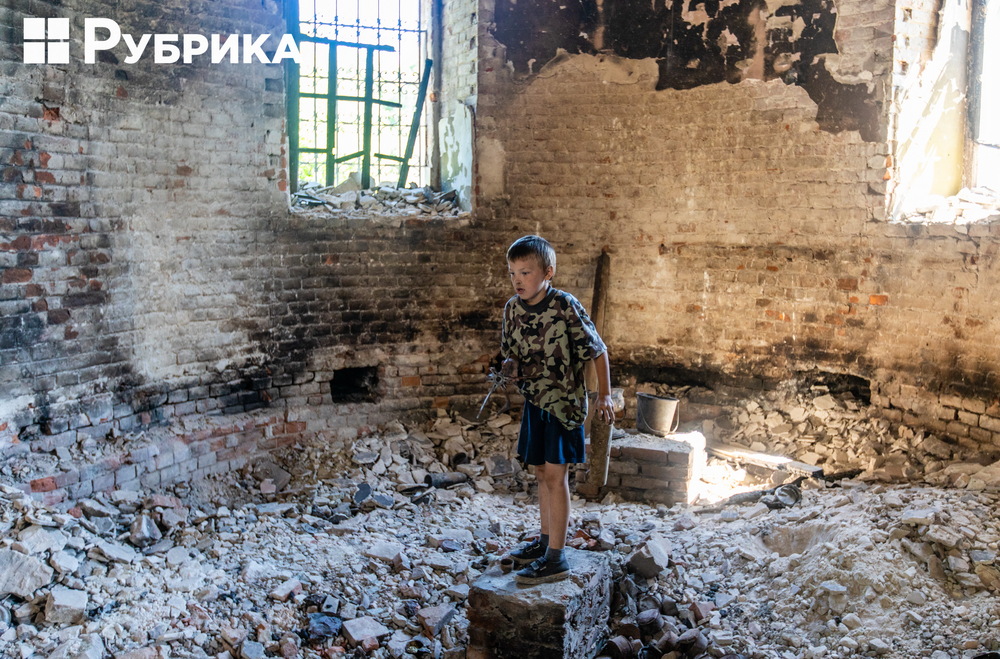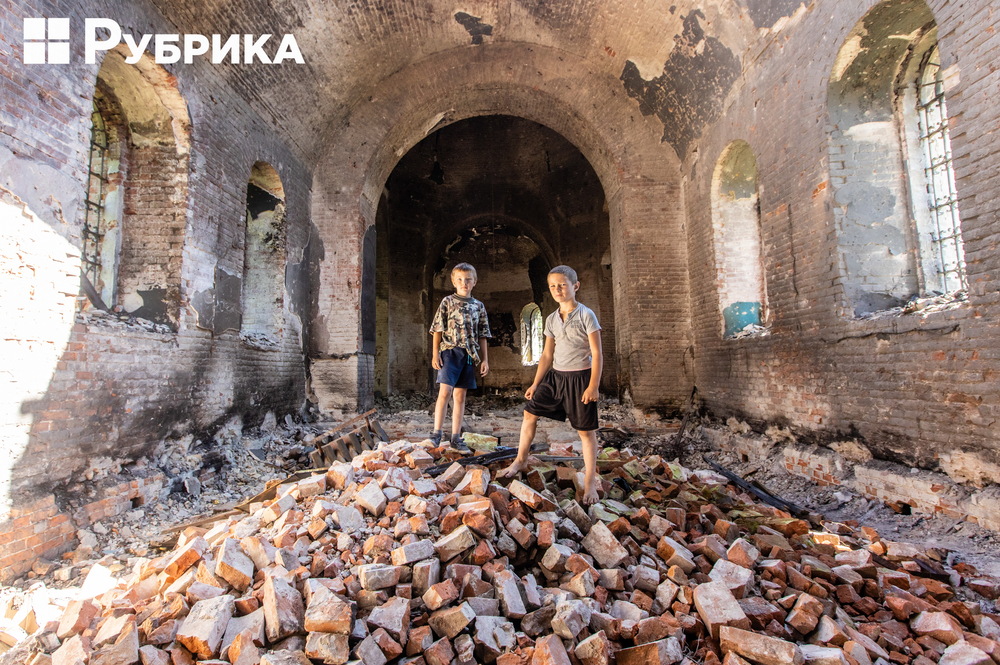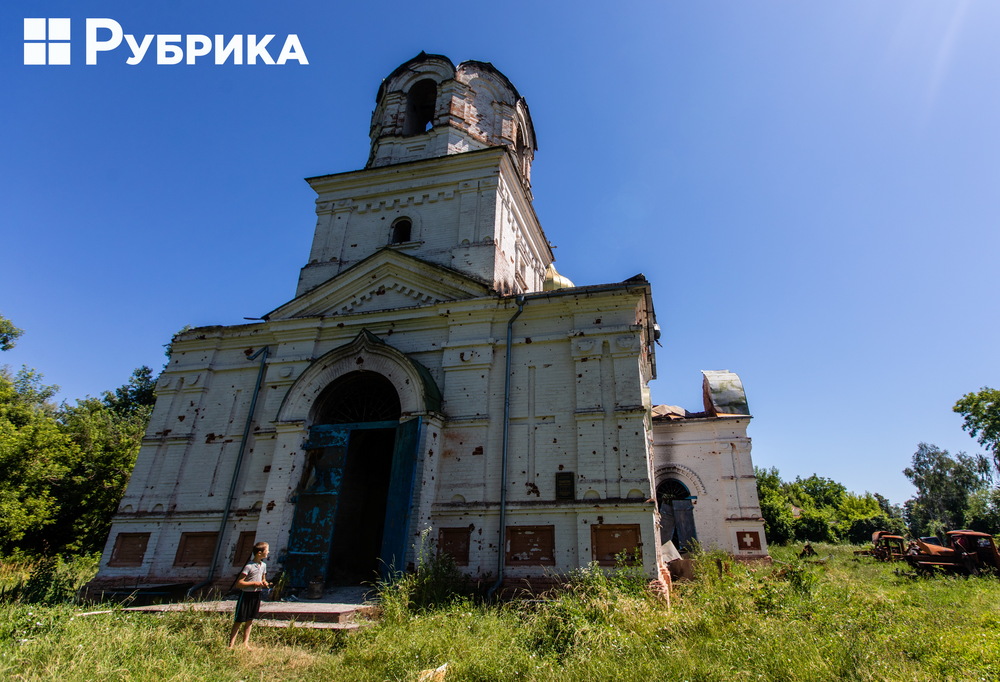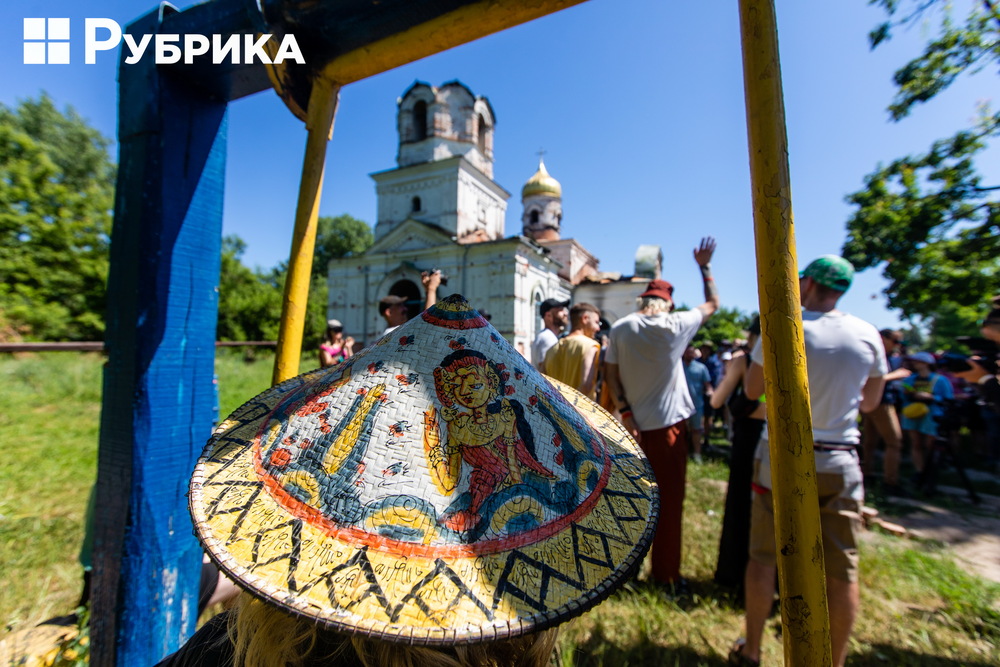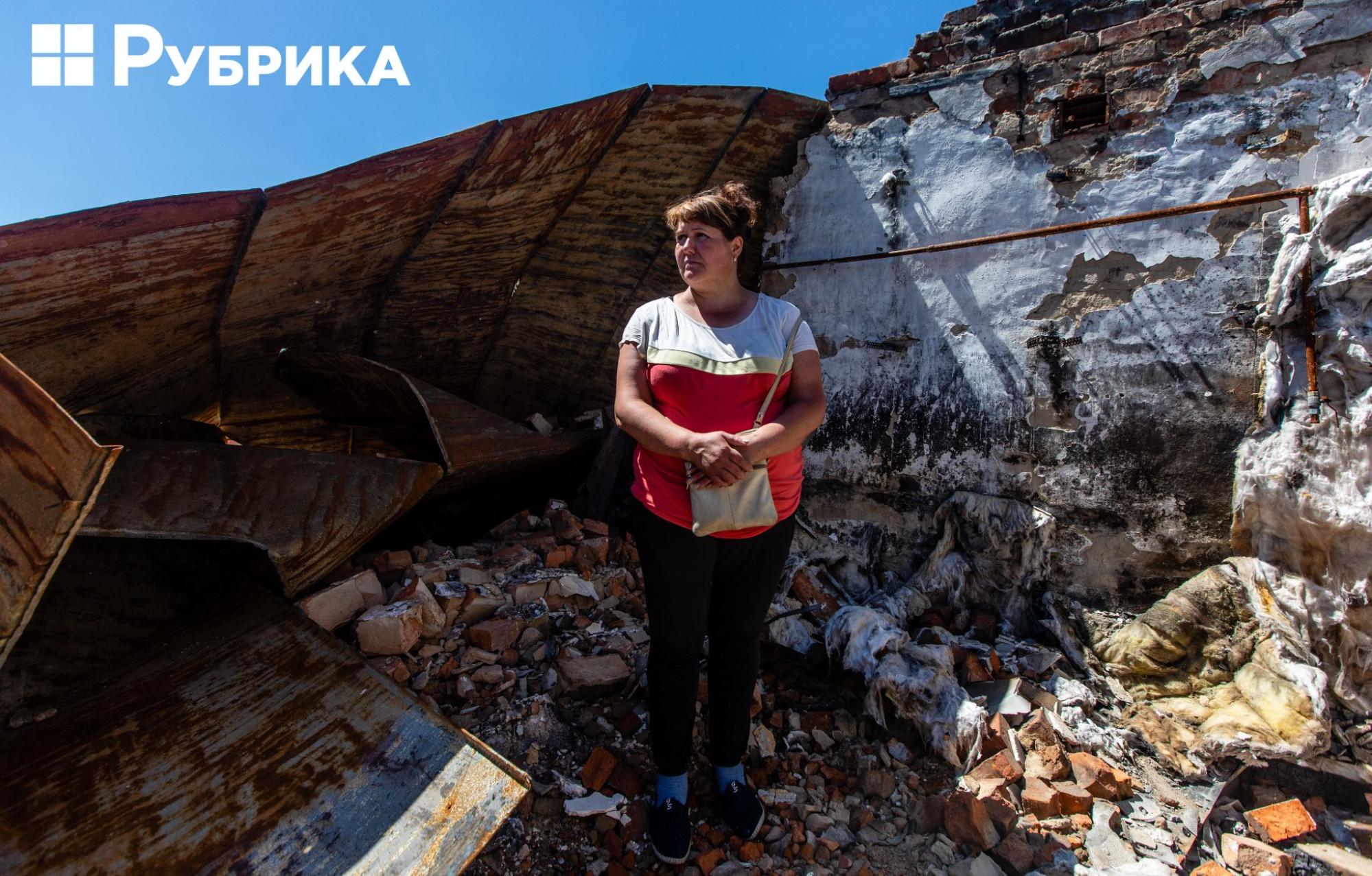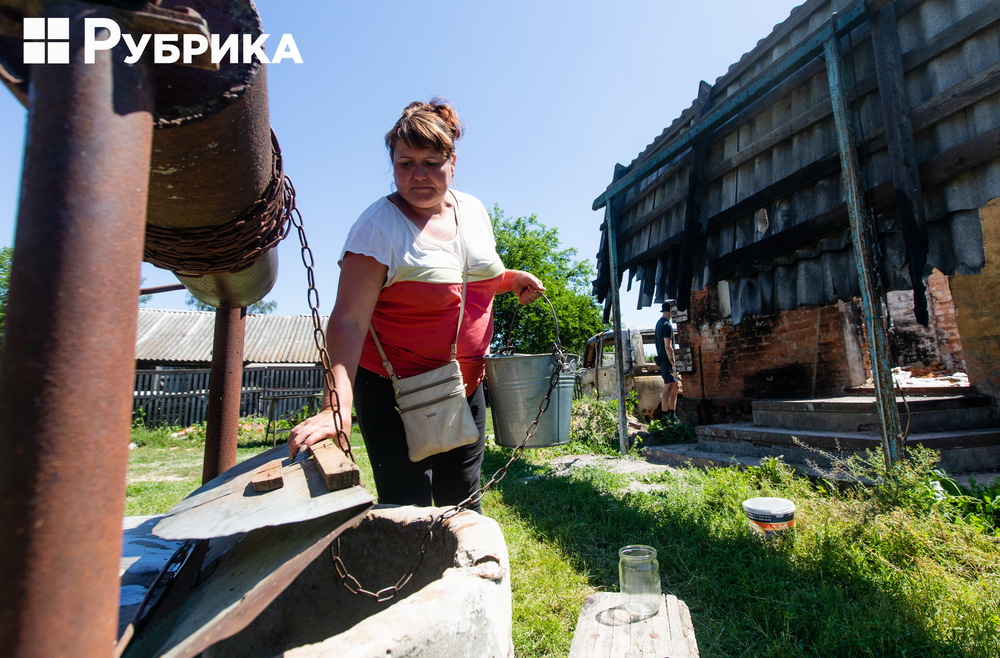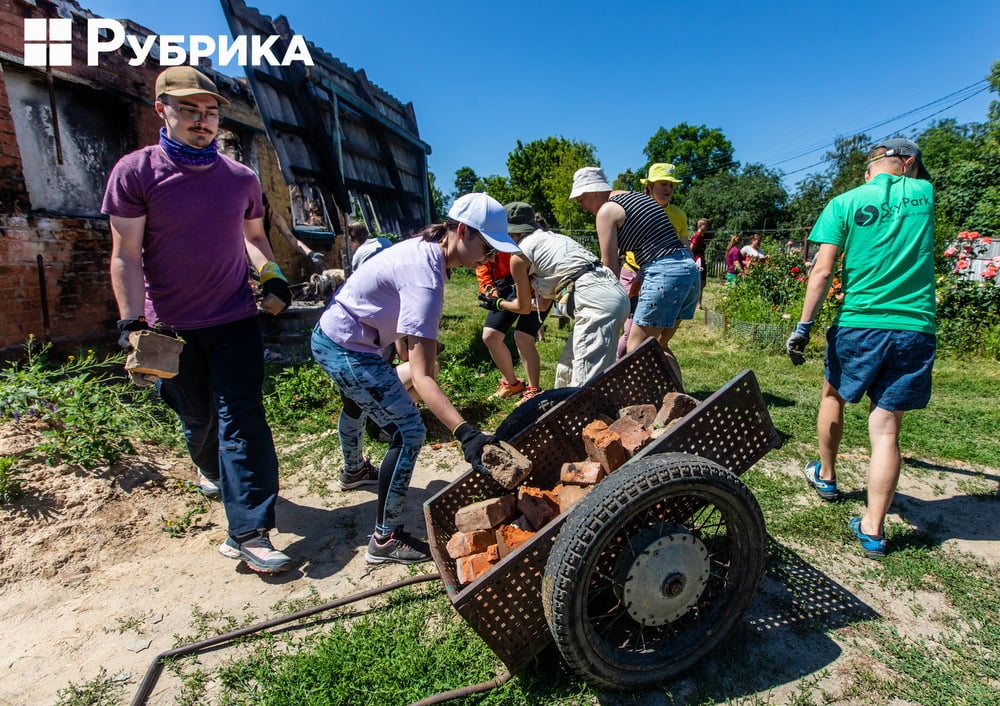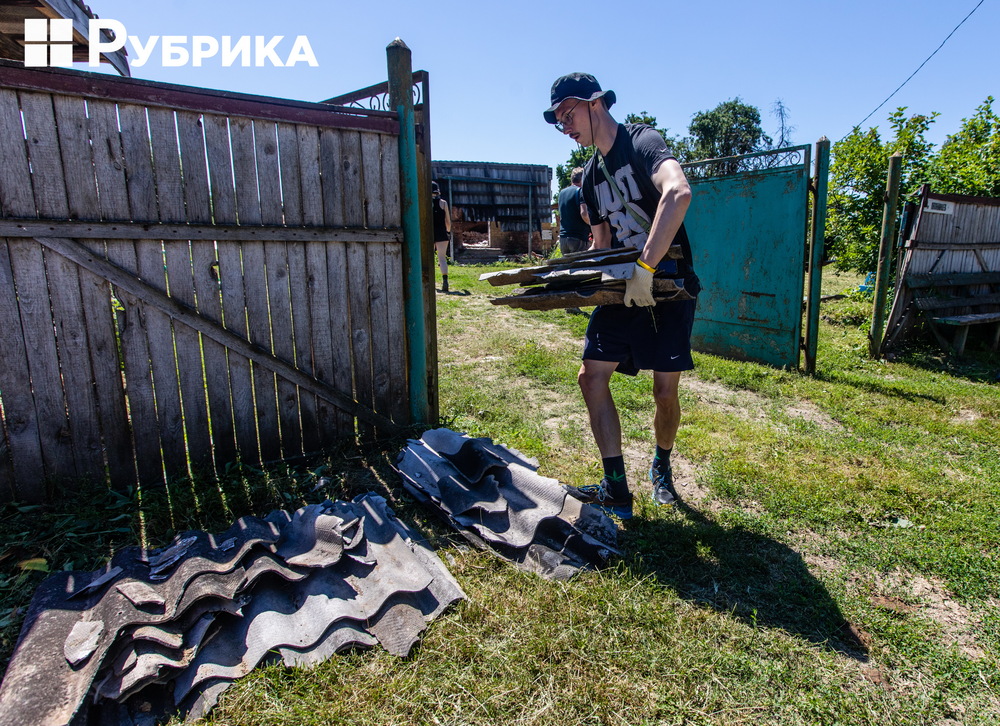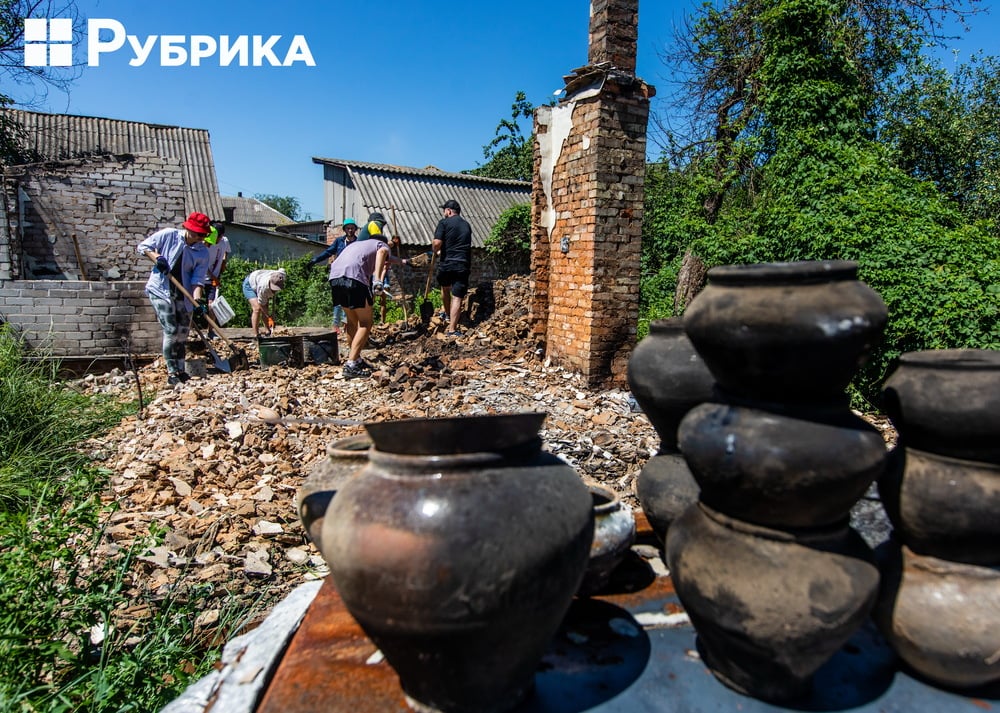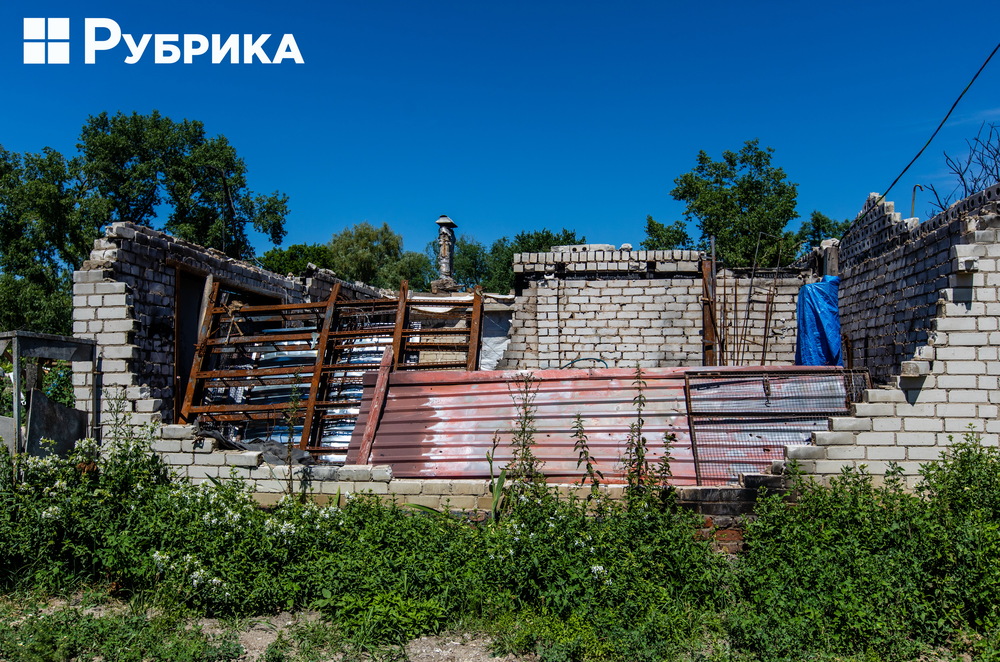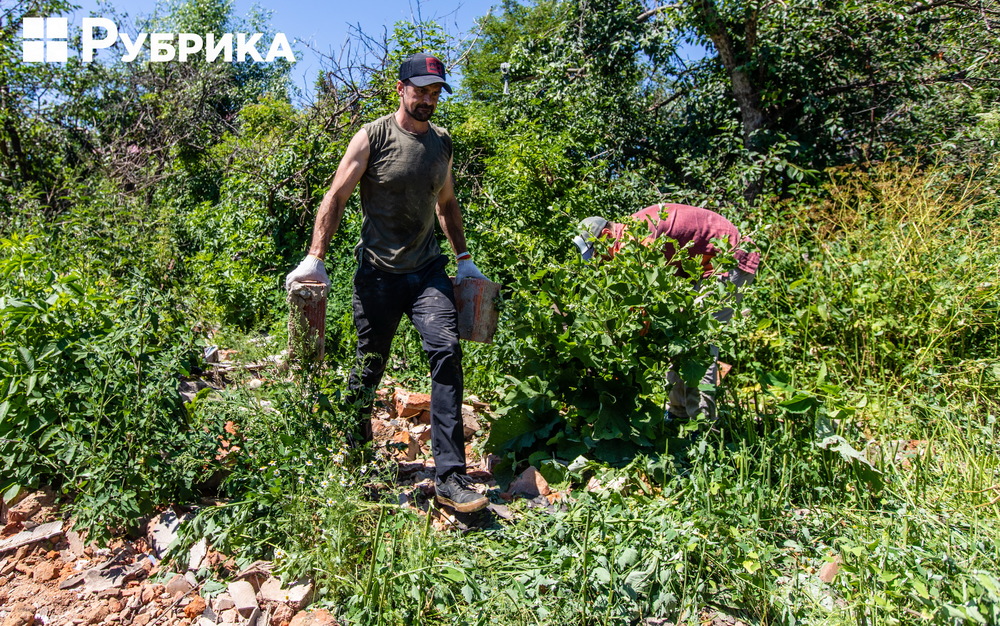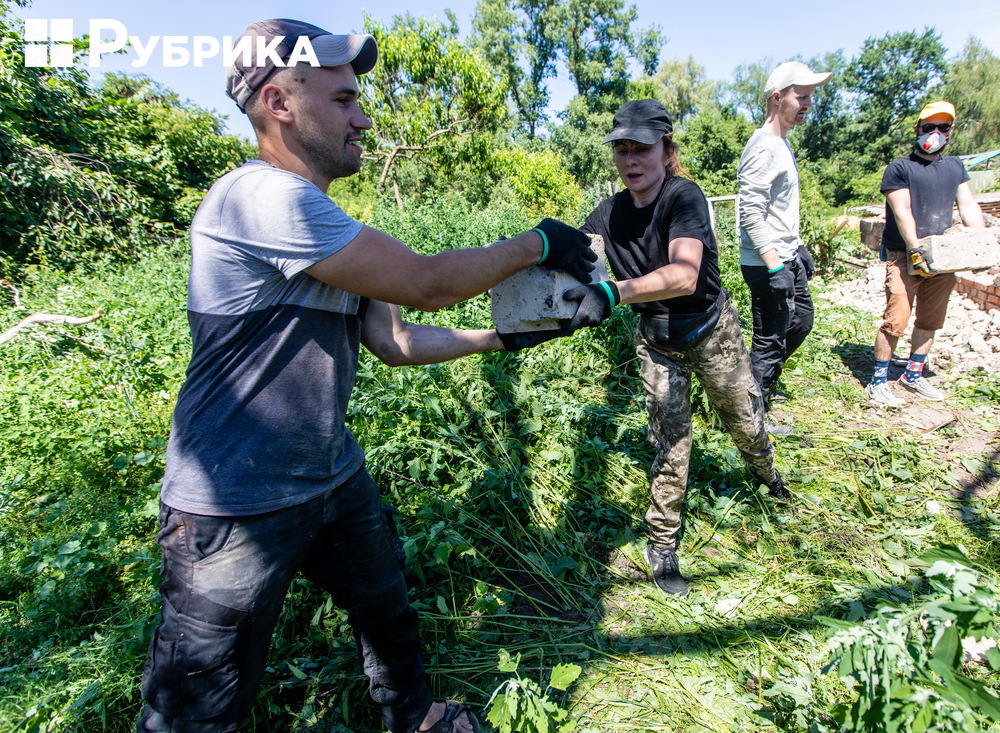Rows of houses stretch in all directions from the large brick church. Those buildings with walls cut by debris and windows blown out by the blast wave are considered whole here. They are few. Instead, in most of the houses, the walls crumbled, the roofs flew into the air, and the yards burned almost to the ground. Lukashivka, a village in the Chernihiv region that was under occupation for 21 days, stands like this three months after the liberation.
Around the same church, volunteers pour out from several large buses. Locals, seeing the familiar transport, start waving and smiling. While the arrivals are changing clothes and figuring out whose shoulder bags are where, a couple of local women make their way through the crowd, one of them joyfully exclaims: "Where is my favorite volunteer today?"
The Repair Together project grew out of a Kyiv company of friends, who one day realized that they could no longer watch the war live, but had to go and clean up its consequences. Since then, the idea has become a project within which hundreds of volunteers go to the Chernihiv region on Saturdays and sort out the rubble russia has deeply hidden simple life under.
More than four thousand houses in the region were destroyed during the russian occupation; the number of damaged buildings is even more significant. Although the Chernihiv region has been freed from occupation, russian troops continue to shell it, sometimes firing dozens of rockets per day.

What is the problem?
Dancing on ruins and russians with loans
"It was a shed; my husband had a workshop. There was a summer kitchen and a room above. The house is here—burnt—on the left. It was a bathroom. Last year, we renovated the kitchen; we only had to insulate the second half of the house in the corridor," Iryna looks around the yard with despair. With the arrival of the occupiers, almost all of the family's farm turned into complete ruins.
russian troops entered Lukashivka on March 9. Immediately, they checked the passports of all locals, took their phones away, and forbade everyone to leave their yards. From the selected phones, the soldiers called their families to tell them that they found themselves in a village that was not on their maps; they did not understand where to go and what to do.
"During one of the shellings, our barn caught fire. We ran out of our basement to our neighbors. It was crowded there, ten people crowded in, they suffered terribly. The next day, my husband and I decided to return to our place. We arrive, and five russian soldiers are sitting in the basement. That's how they lived in our house until the house burned down.
I asked them: why did you come? You see that we have everything, that is, we had everything until you arrived! In our village, we had the Internet, the streets were lit, and there was asphalt. You destroyed everything. They said that it was all politics, that it was not their war. I say: why didn't you refuse? And they say they pay half of their loans at the expense of the army, enormous benefits, and the tribunal is the reason," says Iryna.
On March 14, her house burned down. Since then, she and her husband have been living with neighbors. There is nowhere to go anymore.
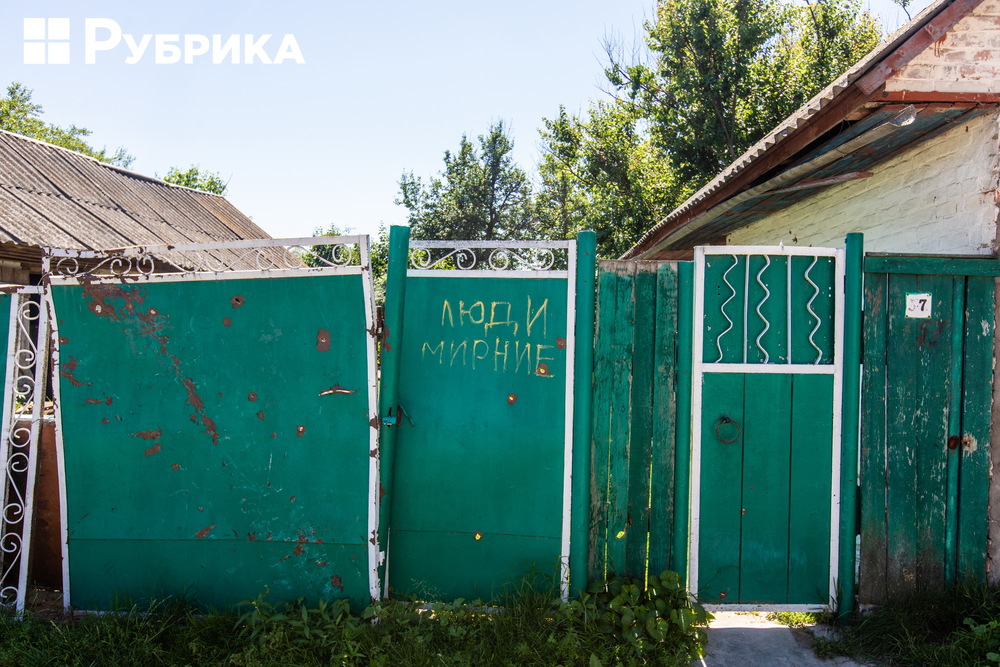
There are thousands of such families in the Chernihiv region alone. Unlike the same Kyiv region, which was also occupied and maimed, fewer volunteers and fewer charitable organizations get there. People also don't have to count on help from the state due to the banal lack of resources and the too high risk that the objects rebuilt with the state's funds, which fall into the media space, will quickly become a new target for russian missiles.
As for Iryna, she says that she and her husband don't want to build a new house until victory. But if you don't remove the rubble now and let it stand for at least one winter, it is unlikely that you will be able to use at least the old foundation and the surviving walls. In addition, the remains of the roof may begin to collapse because the worse the weather, the faster the remains of the house, which no longer have stable supports, will collapse. As a result, people can get hurt.
While we are talking, music is playing in the yard; volunteers are dancing, lining up in a long line, and put bricks on a conveyor belt. The ones intact are placed on the right. The ruined ones are on the left. Several guys constantly drive up with wheelbarrows, pick up the garbage and drive up again. One of the organizers of the communal work is always visible among them. They sometimes distribute gloves, look for shovels, and sometimes comfort the locals.
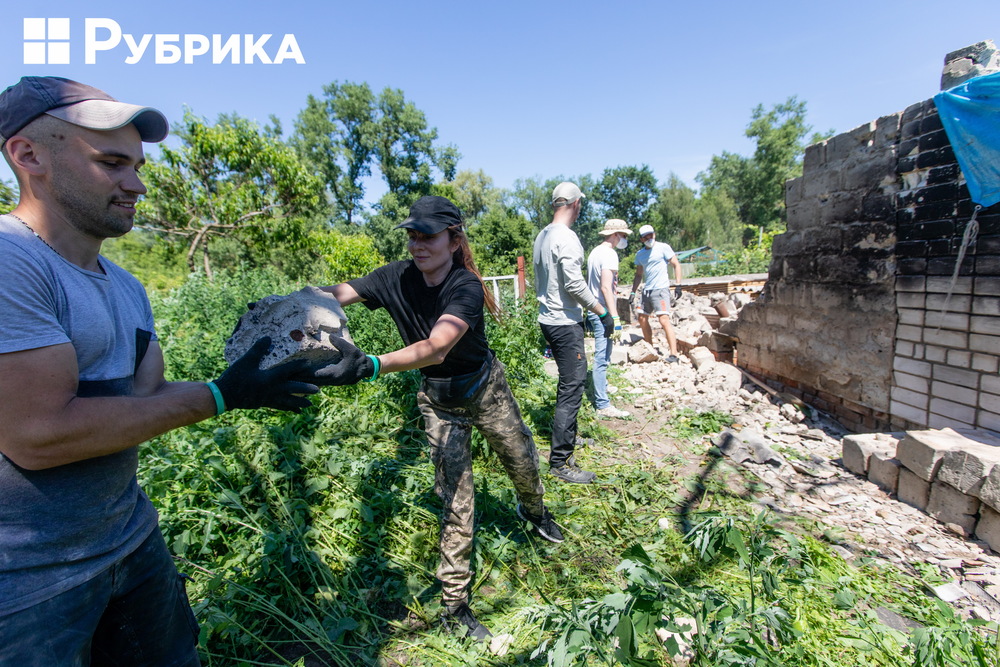
What is the solution?
Repair Together: you need to dismantle the rubble to rebuild
Repair Together comes to the Chernihiv region almost every weekend. They work in two villages—Lukashivka and Yahidne. Each has several locations per communal work gathering. The primary purpose is to dismantle the rubble, so most gatherings are clean-ups. Thanks to them, the number of areas where they cleaned is undoubtedly approaching a hundred.
In addition, at the beginning of July, the project had 13 houses with roofs and windows restored by their efforts. The project helps individual people with purchasing building materials and someone with repairs. The plans are to start rebuilding the homes of Ukrainians that the russians destroyed.
We asked one of the project's co-organizers, Daria Kosiakova, how it all started. With the initiative's launch, the woman left her job as a creative leader in an IT company and now takes care of the project's communications.
"We were sitting at home with Sasha Kuchynskyi. Dima Kyrpa came to us and said he couldn't work as usual and wanted to start volunteering. But we didn't understand which organizations had already full of people and which needed help.
Then, Ukraine liberated the Chernihiv region, and the guys decided to go on a survey to see what was happening there. Then they came back with an idea. I said, 'let's design.' We started making posts on Instagram, announcing ourselves and offering people to spend the weekend at the communal work gathering. And everything turned around," says Daria.
Since then, everything has been going this way: on Repair Together's Instagram page, they make a call for people willing to help, create a chat for volunteers, and explain how to prepare. Then, on Saturday morning, several buses pick up people from Kyiv (100 to 200 volunteers each time) and take them to the villages in the Chernihiv region, where the volunteers work. The organizers provide food. Everyone spends the night in their tents.
However, there's also a preparatory stage. Daria clarifies:
"Dmytro appeals to the village council. They can collect a list of people with a very problematic situation because they know everyone here. They know if someone is seriously ill and if there is someone who experienced something harrowing in the occupation.
When we get to the village, we try through the local authorities to reach out to people who need help and cannot help themselves. Even in the same Yahidne (another town in the Chernihiv region, which was occupied and where most of the buildings were destroyed – ed.), there are houses where people say, 'we will do everything ourselves, just bring us the materials.' And we bring them. We often choose older people whose children or other relatives cannot help for one reason or another.
For example, we have an older woman, Nadia, who brings us dumplings and compôte every time. She is so lovely! When we came to scout last time, as before every communal work, we stopped by her place, and she said: 'Sleep at my place. Why do you need those tents?' Some people don't ask for anything, but we just want to help them. So, we also include them in the list."
The project aims at helping those who stay in their village, don't have the financial capacity to hire workers, and have nowhere to expect help from. There are millions of such people in Ukraine now.
"We just need a plan"

The Resurrection Church sits in the middle of the village, right between the objects the volunteers are cleaning this time. The temple walls are hemmed with debris, machine guns, and other traces of war. Burnt-out russian equipment stands dejectedly nearby. Local children climb on it, run through the ruins of the church, and play with the remains of russian ammunition. There is much of it here; the occupiers set up their ammunition warehouse in the church.
After the liberation of Lukashivka, not only russian rations, their weapons, and personal belongings but also the bodies of tortured village residents were found in the cathedral walls. It is unknown how many people died in Lukashivka at the hands of the invaders. The russian military didn't touch most of the locals unless they left their homes. However, they shot less submissive ones.
Children's voices are ringing near the temple:
"We just need a plan for what to do with Putin!"
"Should we burn Moscow?" the six-year-old boy thinks for a while, then continues a little louder, "I'm ready! They burned down my house."
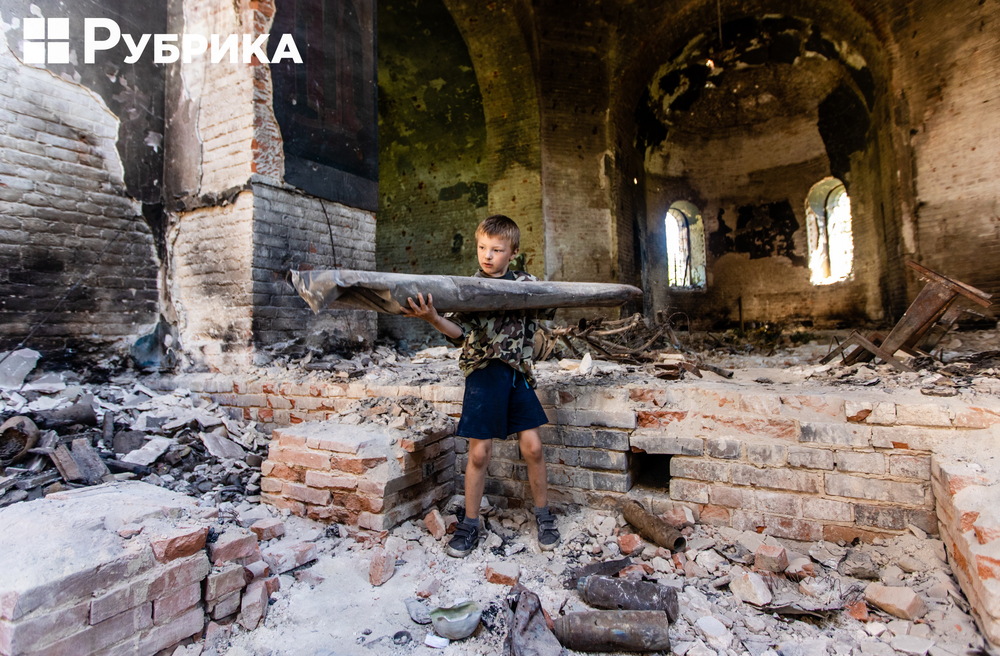
Then the children run into the church. Inside, they rumble with something heavy and, obviously, iron. Now there are piles of iron. The Ukrainian military had to aim a rocket at its architectural monument to liberate Lukashivka from the occupation. It was the only way to leave the enemy without fuel and provisions; the russians stored everything there.
Near the church is the only shop in the village that still works. The assortment there is currently tiny: bread, meat, and several types of dairy. Nina, who works there, explains there is no point in buying products: people can barely afford essential ones.
Nina's house was also destroyed. This time, the volunteers fill her yard with their crowd. There is also music, cheerful sing-alongs, and sad sighs when someone comes across the woman's chickens buried under the rubble of the house.
The head of the Building Ukraine Together volunteer organization, which has been rebuilding houses destroyed by the war since 2014, Yurko Didula, says:
"In general, many similar projects emerge. There are not too many of them. There is more work than initiatives and volunteers willing to participate in reconstruction—more than the organizations that can somehow meaningfully include them in the reconstruction. Our organization is trying in every possible way to strengthen such initiatives. If we talk only about the demolition of rubble in the Chernihiv region, work like this lasts about half a year. It is a critical stage, which is important to pass quickly."

Yurko says that he also went on a trip with Repair Together. In two days, the volunteers thoroughly cleaned several areas. Although this work is not the grandest, it carries not only a purely practical meaning but is also crucial for the local people's moral state.
"The locals, who see that people are coming to them and starting to dismantle the debris, hope they will not be left behind and that they will restore their houses. From the point of view of solidarity and hope for people, it is a vital format. It seems to me that, to some extent, this format is even more interesting than what Building Ukraine Together usually does (the organization arranges week-long camps for 20-30 volunteers and, besides construction work, adds a mandatory educational program, ed.). It makes it possible for more people to join. There is no complex information and cultural and educational element. That is, people come, hang out, have a freer schedule," Yurko explains.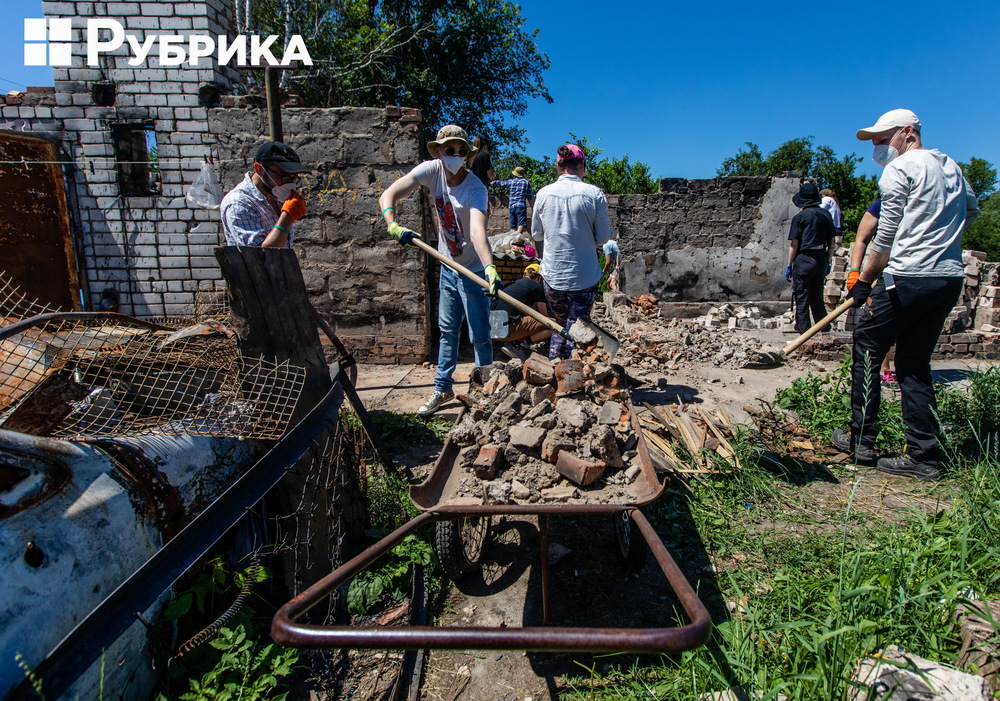
"All these people are here because they are good"
One of the volunteers, Stas, says he came to the communal work for the second time. When asked why he decided to go from Kyiv to the Chernihiv region, he answers:
"Because I want to help people. Nothing else is needed. At first, the volume of collapse is shocking. It makes a depressing impression. But the impressions of what you do are still very positive. All these people are here because they are good. And that's cool. It inspires," says the guy.
The organization usually involves from one to two hundred people like Stas in the work gatherings. It is expensive to gather so many people in one city, feed them, and provide conditions, so they come a second time. Thus, Repair Together has developed a transparent approach to financing. Daria Kosiakova explains:
"In the past, all the food was free for us because volunteer organizations like us provided it. Venues like Jacuzzi Cafe, Kosatka, and Volonterskyi Pryvit did it. We bought the products ourselves this time, but GastroArmy of Kyiv provided us with buses and cooks. It's like a collaboration with us.
We mainly pay for the buses through small contributions that we ask for from volunteers. In fact, they pay the fare. Many people chip in more, saying that they are paying for another volunteer. And as soon as we have a more considerable amount, we buy gloves, equipment, all things people need for comfortable work."
Daria says the volunteer organization's goal is to move away from donations from Ukrainians and switch to funding funds and partnerships. It is a more reliable way of financing and less risky than voluntary donations.
"For example, we recently had a partnership with Lenovo. From each sale of a laptop, they transfer money to us so that we can repair 12 houses. We really want to go to the international level. We don't want to take money from the Ukrainians because they first have to spend it on the Ukrainian army, and we don't want to take money from the army. Although the goal of our organization is to restore houses, it is obvious that the highest goal is victory," the woman says.
Repair Together has a lot of work to do. They announced an ambitious goal—to rebuild at least 12 destroyed houses and repair 25 more by winter. For this, the initiative is looking for partners.
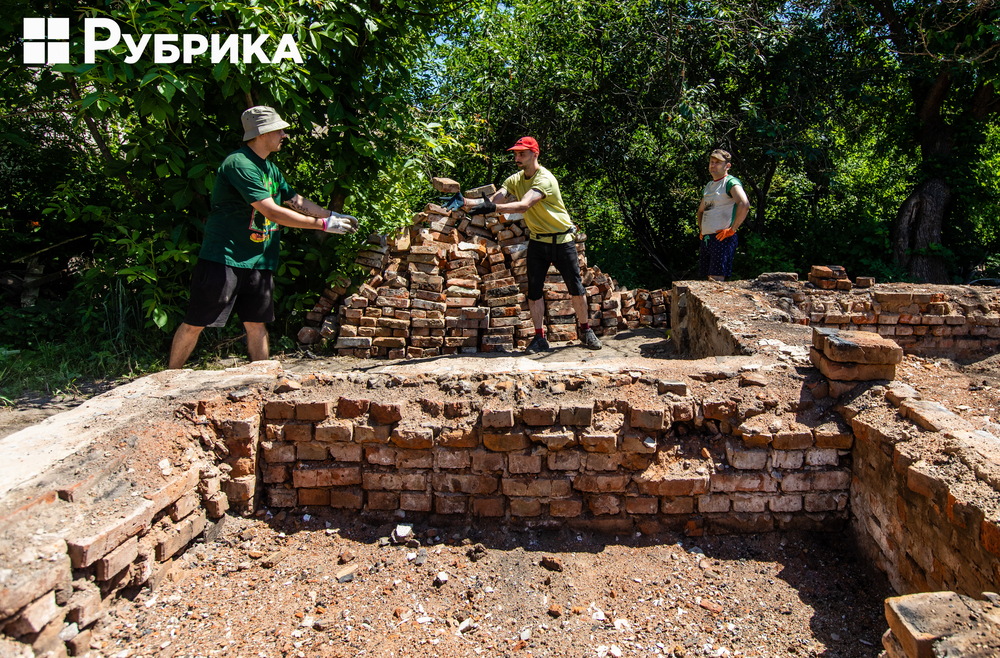
Yurko Didula, whose organization already has a similar experience, says restoring any house is expensive and time-consuming. Still, at the same time, it is a priority task because both the defenders and the displaced people must have somewhere to return.
"In 2014, we restored the house almost from scratch. One wall remained there. My partners and I managed to do this in three months of non-stop work. That is, I talk about three months, provided that there are money, masters, and volunteers. In three months, you can not only raise the walls and put a roof but also make interior repairs and prepare the house for life," says Yurko.
So Repair Together set an ambitious goal and worth attention. However, the main focus remains on the urgent task—to rebuild the house, you must first dismantle the rubble. The project's volunteers do this quickly, efficiently, and where it is most needed.
You can support the project financially by following this link. Subscribe to the initiative's Instagram to follow its development and join the community.
Photo by Nick Tymchenko, "Rubryka"
Newsletter
Digest of the most interesting news: just about the main thing




